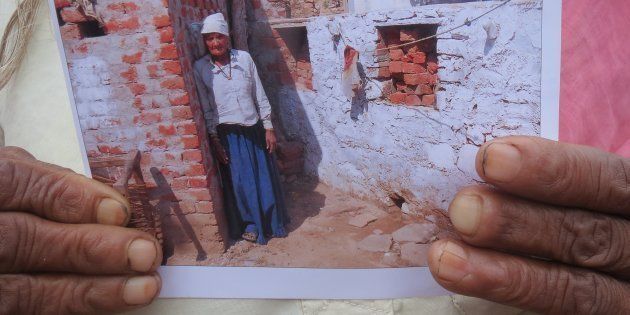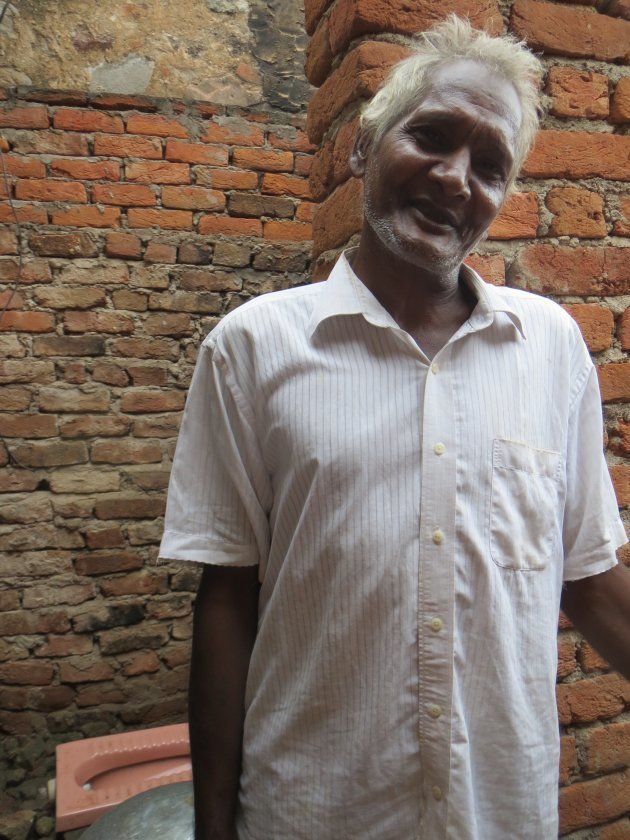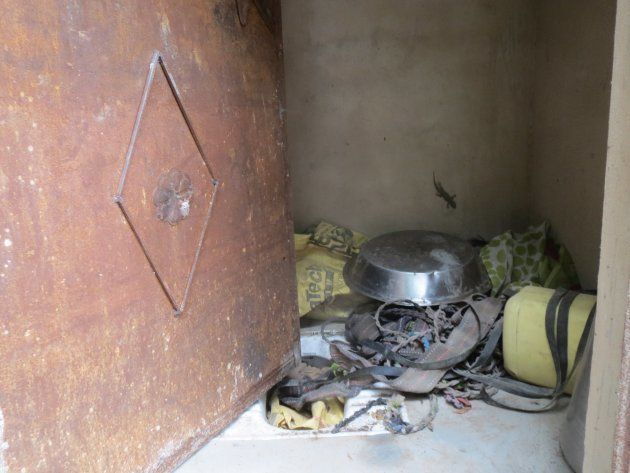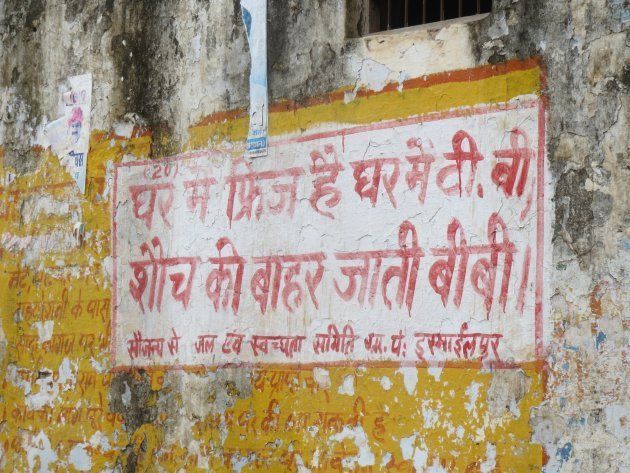
ALWAR, Rajasthan— On 2 October 2014, Prime Minister Narendra Modi launched the Swachh Bharat Abhiyan which aimed to eliminate open defecation in India by October 2019. Four years on, the Ministry of Drinking Water and Sanitation has declared 25 states and union territories free of open defecation.
However, a visit to Alwar in Rajasthan, declared "Open Defecation Free" (ODF) earlier this year, reveals that the much-vaunted mission—like most government programmes—has become an exercise in state coercion and falsifying data, in a dash to meet arbitrary targets. As a consequence, the programme is failing those who need it the most, by simply "editing out" families unable to afford to construct a toilet.
Last week, delegates from 68 countries met to celebrate India's ostensible success in ending open defecation at the Mahatma Gandhi International Sanitation Convention, a glitzy event in New Delhi. President Ramnath Kovind described the Swachh Bharat Abhiyan as a "revolution playing out in real time".
Meanwhile in Toolera, in Alwar's Umren panchayat, Muni Ram, a construction worker from the Dalit Jatav caste, huddled in his one-room tenement, taking shelter from heavy rains. The tall, greying Ram has large hands and his head hits the roof of the room when he stands up. His compact one-room house has cots, buckets, pans and a new cooking stove. But there is no room to keep the large gas cylinder, so Ram has stored it in his half-built latrine.

"I built the walls myself, spending Rs 8,000 on the material and another Rs 350 to buy this toilet seat, but I was still not able to build a latrine," said Ram, pointing to the pink Indian-style toilet seat lying on the ground next to the cooking gas cylinder.
Under the sanitation mission, the government allows any household that does not have a family member working in the government to get Rs 12,000 reimbursed for toilet construction.
Ram earns only Rs 3,500 in a good month if he finds work for 10-12 days at construction sites in Alwar.
"I live off the main village lane, and I thought I would not have to spend on a pit or a septic tank, and would simply connect the latrine to the village's sewer line," he said. "But even that requires up to Rs 20,000, which I cannot afford."

A few metres beyond Ram's house, in Toolera's Harijan Basti, the segregated Dalit quarter, Jatav and Valmiki families who live in mud huts next to an open drain said they did not have enough funds to even attempt to construct latrines.
The women earn very little, mostly working as domestic workers in Alwar town, 8km away, for Rs 700-1,000 a month, or collecting garbage for Rs 150 a month per household and a few chapatis.
Every day, they leave their homes to defecate in the darkness between 4 am and 5 am, as their houses do not have toilets and the households they work in don't allow them to use theirs. Sarita Valmiki, a domestic worker in her thirties, explained that defecating in the open was very difficult after daybreak, or in case of an illness, or on rainy days like that one.
Nearly all the families in the Harijan Basti said they had no choice but to defecate in the open.
Getting the ODF tag
Being declared ODF means that the area's entire population has access to toilets and uses them regularly instead of defecating in the open. But the rush to show that deadlines have been met means that some of the most vulnerable households are left out of the scheme's reach.
Earlier this year, Rajasthan declared all its villages free of open defecation. But in villages such as Toolera, which has access to a town with relatively better connectivity, even the construction of latrines is not complete.
While most low-income Dalit households in Toolera said they still did not have access to a toilet, Khursheed Khan, who owns a grocery store in the village, alleged that "at least one-fourth of the 1,400 households" in the two villages in the panchayat did not have latrines, but had colluded with local officials to show photographs of toilets constructed by others to claim reimbursement.
Hemant Sain, who was the Umren panchayat secretary from 2016 until recently, denied the allegations, saying that that only a smaller proportion, between 70 and 80 households, lacked a functional toilet.
The Swachh Bharat Mission subsidises toilets only for households identified as lacking a toilet in a 2011-12 baseline survey. But these numbers are not reliable as households added to a village after 2012, or those that were excluded from the survey, are left out of government lists.
Under pressure from the district administration to declare all villages "ODF" before March this year, local officials have "self-declared" their ODF status, even resorting to removing the names of those who were unwilling or unable to build latrines to show that targets had been met.
In Toolera, declared ODF in March this year, Sain admitted that households such as those of Ram, the construction worker, were simply excluded from the list when they failed to build a latrine.
"In 2016, of the total 1,400 households, we still had about half, 680 households, listed as not having a toilet," said Sain. "Of these, 433 were in Toolera. We 'edited out' 130 households that were not willing to build latrines even after we repeatedly instructed them, citing lack of space, or family disputes, or lack of funds."
Parameswaran Iyer, secretary of the ministry of drinking water and sanitation, did not respond to messages asking for comment.
When there are latrines, but no water
Forty kilometres away, in villages in Kishangarh Bas block, with a lower density of habitation but a more severe water problem than villages near Alwar town, residents described how they had built latrines under pressure from local officials, but avoided using them to conserve water.
In Ramlu Ka Baas, a predominantly Mew Muslim village in Jilota panchayat along the Aravalli range, farmers said that they found it difficult even to grow millets as the groundwater had dropped to lower than 600 feet below the ground. Water tankers, rented for Rs 800 a week, are necessary for survival. But officials threatened to withhold essential services unless the households, anxious about their access to water, built latrines by March 2018.
Nafisa Khan, a farmer, said that her 11-member family, like most of the 150 households in the village, lacked a toilet. "Last year, the panchayat officials told us that if we do not have a red stamp saying "open-defecation free family" on our ration cards, they will cut off the ration grains from the government."

Arshad Khan, a panchayat ward member, said despite the coercion, around 70% households still did not build latrines.
But Ramlu Ka Baas village is "ODF" on the ministry website, like other Rajasthan villages.
"We could push everyone only so much," said Khan. "Those who still did not build by then were marked as households that lacked space to build latrines. This way, the target got reduced and we were able to show we had complied."
Khan estimates that most of the families that have built latrines don't use them due to the groundwater crisis.

In Jilota, a predominantly Dalit Jatav village in the same panchayat, many women farm workers said that they had began to use the newly-built latrines, but their male relatives continued to defecate on the dungar, the Aravalli hillock at the edge of the village.
Surta Jatav said the women spent several hours of the day fetching water, even during the rains. "We got a latrine built two years back but five of our family members defecate in the latrine, and five outdoors to help conserve water."
Kamla Jatav, an elderly woman, asked whether it was not "impure" to defecate in the house.
"These kind of toilets may be all right in cities, with drains and sewer systems," she said. "Here, it is as if our faeces are getting stored under our houses, unlike when we go out to the forest in the open."
Panchayat secretary Prem Pal justified the threat to cut off essential services as being in the villagers' "own interest". Pal said he had declared 385 households in Jilota as "ODF", keeping out more than "100-odd households" that did not build latrines.
"For now, we had to edit them out. Those will be shown later as "ODF Plus" families," he claimed.
PC Kishan, Rajasthan director of the Swachh Bharat Mission(Rural), told HuffPost India that even though panchayats had declared themselves ODF, government teams had verified every village, including in these blocks in Alwar. "We formed small teams that were sent to check these villages and they found them compliant this June."
While 5% of the scheme's budget was to be spent on information and communication campaigns, Kishan admitted that the state government had used only 0.5% for this purpose, the lowest in the country after Uttar Pradesh.

What do government surveys really survey?
Though the Ministry of Drinking Water and Sanitation's Management Information System only shows whether latrine construction targets have been met (as per the baseline survey of 2011-12), and not whether they are being used, its surveys claim very high usage of Swachh Bharat latrines.
The National Annual Rural Sanitation Survey(NARSS) by the ministry and the World Bank said in March 2018 that over 93% people with access to toilets used them. The ministry has also pointed to the findings of a survey by a government society, the Quality Council of India, which shows latrine use at 90%.
Public health researchers say this contrasts with other evaluations during the same time period. For instance, the National Family Health Survey-4, released in January, found that open defecation at the household level in Ajmer, declared ODF in July 2016, was 39%. The Performance Monitoring and Accountability, a rapid-survey of 4,893 households by Indian Institute of Health Management Research university in Jaipur found that open defecation level in rural households was 49% in October 2017. Six months later, the Rajasthan government declared the state ODF.
Nikhil Srivastav, a research scholar at the University of Texas, said the NARSS survey was conducted with the goal of showing that targets had been met.
He said the ministry had invited outside experts to attend the training sessions for the surveyors. "At the training sessions, we witnessed that government representatives instructed the survey company's head trainer that the survey data must match the ministry website data, or else they would have to go back to the villages where they found discrepancies at their own cost," he said. "This disincentivises the survey company to report open defecation."
Srivastav added that in places where open defecation had not ended, the ministry was relying on statistical tools to show it had. "The question now is how will the government count, reach out and assist those who still defecate in the open."